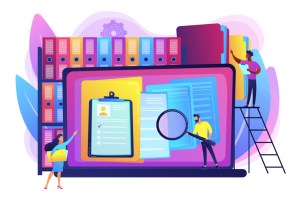7 Important Things to Remember When Scheduling Social Media Posts



Log in to Twitter and look at what shows up in your feed. Now blink. By the time you open your eyes, you might see a flurry of new tweets popping up, and the ones you had begun to scan are already difficult to remember. This same exercise will play out pretty much the same way whether you try it

Salesforce Canada
Log in to Twitter and look at what shows up in your feed.
Now blink.
By the time you open your eyes, you might see a flurry of new tweets popping up, and the ones you had begun to scan are already difficult to remember.
This same exercise will play out pretty much the same way whether you try it with Facebook, Instagram or even LinkedIn.
Social media services were intentionally designed to be as in-the-moment as possible. We tend to stay engaged with them in part because there’s a seemingly infinite number of posts you can explore.
While that constant flow of content brings a lot of value to users, however, it can create challenges for businesses that are trying to use social media as a way of marketing themselves.
If you’re not thoughtful about when you post particular kinds of social content, for example, you risk being lost in the crowd, or simply broadcasting to customers who aren’t likely to be using social media at the time.
By the same token, small and medium-sized businesses don’t always have the luxury of employing a full-time social media team member who can stay attuned for an opportune time to post.
This is why services that let you automate the process of posting on social media can not only let you save time but make you more likely to reach your goals. The only thing they can’t always do is tell you when you should schedule your content to appear. Here are some guidelines that could help:
1. Follow the customer journey — and not just the usual one
Marketers often talk about organizing campaigns based on the customer journey, from the “awareness” stage to the time they make a purchase and so on. Customers take other kinds of journeys in their day to day lives, though, and it’s worth considering how to align your publishing schedule accordingly.
If you’re posting time-sensitive content that could affect their day (like details about speakers at a conference, for instance), scheduling earlier in the day before they start their commute might make sense.
More light-hearted or inspirational content might work better around lunchtime, when they’re ready for a diversion, while posts scheduled for the evenings could be devoted to content that’s more longform or immersive, like a video or webinar recap.
2. Identify the times you want to inform and the times you want action
Some posts could be scheduled on a fairly regular cadence based on how frequently the content is produced. You could have social posts ready to go every time a new article is published on your blog, for instance, or every time you add a video to your YouTube channel.
These posts are largely about content that informs — or entertains — in order to drive awareness and interest.
Other content on social media will have a more purposeful call to action than simply “learn more.” If you’re offering a limited time discount or promotion, for example, you may want to have a flurry of posts scheduled at first, followed by a series of “reminder” posts as the deadline draws near.
3. Read the room (and the news)
Scheduling social media posts can save a lot of time, but it shouldn’t come at the expense of using common sense.
Even as you automate a series of posts to promote a new product or service, for example, you need to stay on top of what’s in the new or trending online. This includes major holidays but also stories that have nothing to do with business (like the recent pandemic, for instance).
Having your post appear amid a major political event or news item can make your brand appear tone-deaf or irrelevant. You can always push back the post to a date when there’s room for new topics to surface.
4. Recognize what customers are saying about you as you’re posting
Hopefully this never happens, but imagine if one of your products had a major glitch that caused angry customers to share their negative experience on social media.
Now imagine you scheduled a post promoting that product around the same time. It would make a bad situation even worse.
This is where those in marketing, sales and service need to be in close contact and aligned on their strategy. Posts could innocently be scheduled that promote one key product while a new one is about to be launched, for example. Always aim to make it look like the left hand knows what the right hand is doing on social media.
5. Determine the degree to which you may have to respond to customers
In a similar vein, you can schedule social media posts around the clock, but the nature of those platforms is intended to foster conversations. That means customers and prospects may choose to comment or ask questions based on your posts, even when your business is closed for the night.
If you expect a lot of feedback, you may need to add some kind of details in your posts about your ability to respond in order to manage expectations. Otherwise, tools such as chatbots can be a great way to have answers to frequently asked questions ready to be shared around the clock.
6. Sometimes content deserves a second (or third, or fourth) chance
Depending on the platform, re-posting something you’ve already published could make a lot of sense. On Twitter, for instance, it’s relatively easy to follow up something you posted on Monday by scheduling it to run again later in the week with an “ICYMI” (otherwise known as “In Case You Missed It”) at the start of the tweet.
The same holds true for Facebook, where you could schedule a link to the same blog post, for example, to run over weeks or months but use different introductory copy in the post. Sometimes even re-posting on Instagram makes sense if the picture is particularly compelling, or if the message in the caption remains relevant.
7. Reschedule based on what you learn
While there will be a degree of experimentation when you first start automating social media publishing, you’ll want to track how posts performed and change your strategy accordingly.
In fact, don’t assume that because a post performed well once during a certain time of day that you’ve stumbled onto some kind of golden moment. There can be many factors that influence who looks at what and when. Tie analytics to everything you do on social media and be prepared to continue optimizing for better results.
The only other thing to bear in mind with scheduling social posts is that you’ll only get better the sooner you get started. In other words, the time is now!




















